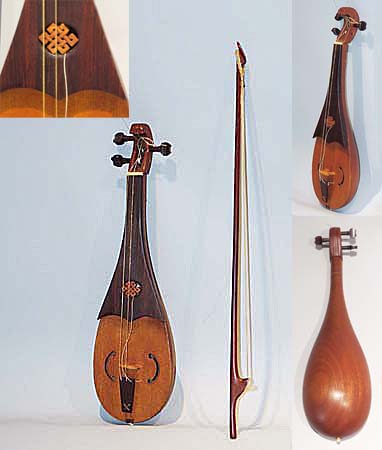
Owner: HWMC
Catalog#: 2CL-CHLT-057
Violin Family
Rebec (European)
Europe
French, German, Italian, Spanish
Wood, ivory, gut strings
Early-Mid 20th century
Length: 20.75 in, Width: 5.5 in, Depth: 2.75 in; Bow length: 25 in
Strings – Lutes – Violin Family
The rebec (rebecq, and originally various other spellings) is a bowed string musical instrument. In its most common form, it has a narrowboat shaped body, three strings and is played on the arm or under the chin, like a violin. The rebec dates to the Middle Ages and was particularly popular in the 15th and 16th centuries. The instrument is European and was derived from the Arabic bowed instrument rebab and the Byzantine lyra. The rebec was first referred to by name around the beginning of the 14th century, although instruments very similar to it had been played since around the 9th century and referred to by the term “lyra”. A singular distinguishing feature of the rebec is that the bowl (or resonating body) of the instrument is carved from a solid piece of wood. This distinguishes it from the later period veilles and gambas known in the Renaissance.
The body and neck of this rebec is teardrop shaped and carved from the same piece of wood, with a second, darker piece of wood, acting as a fretboard and extending over the body slightly. This darker wood fretboard has an opening that is inlaid with a knot pattern in a lighter wood just below the 3 gut strings. The strings are attached to 3 wooden tuning pegs which match the fretboard, and the peghead of the instrument is carved in a “C” shape. The strings extend down across a light wooden bridge where they are tied to a dark wooden tailpiece that is strung onto a small ivory peg at the base of the body. The body has two C-shaped sound holes, one on either side of the strings near the bridge. They are symmetrical, with the curve being convex to the outside of the body. The bow which comes with the instrument is a simple wood carved bow with light horsehair which is braided at one end.
